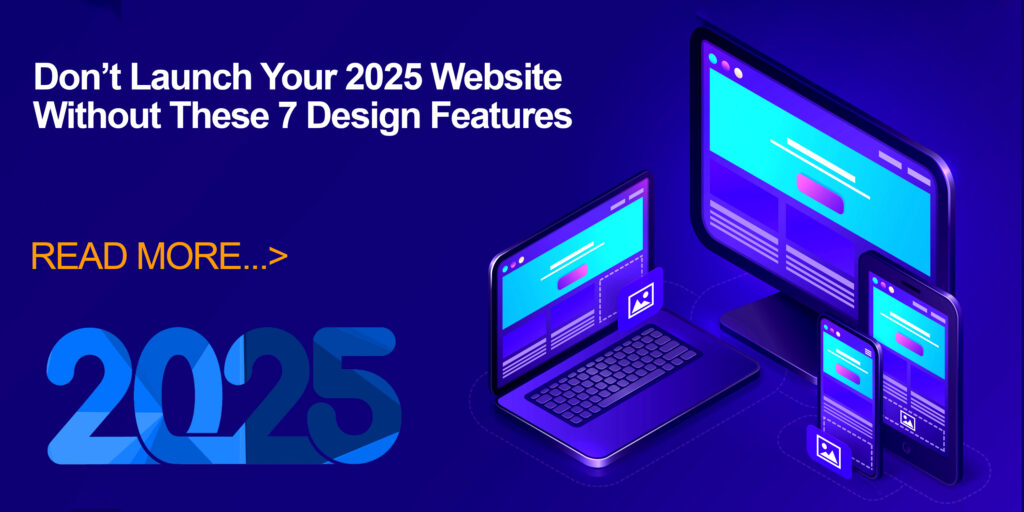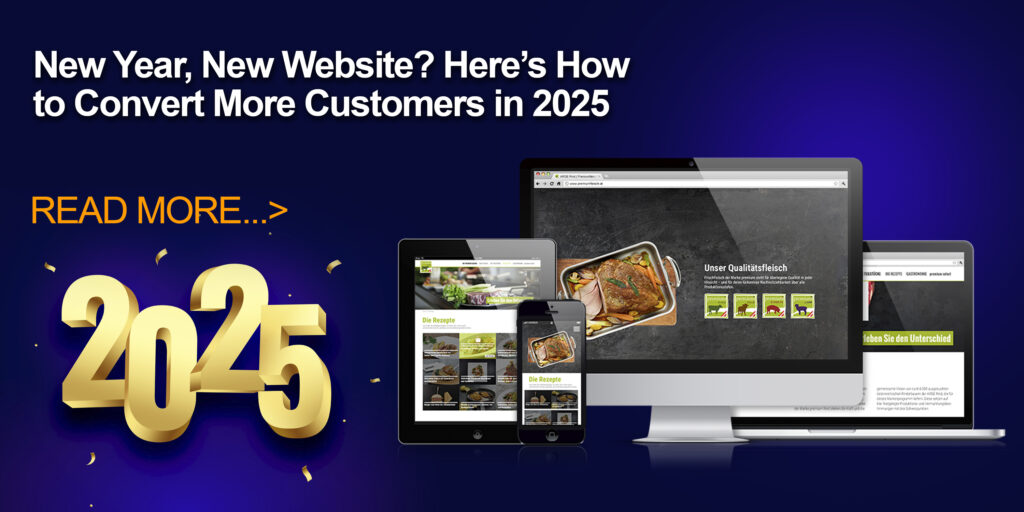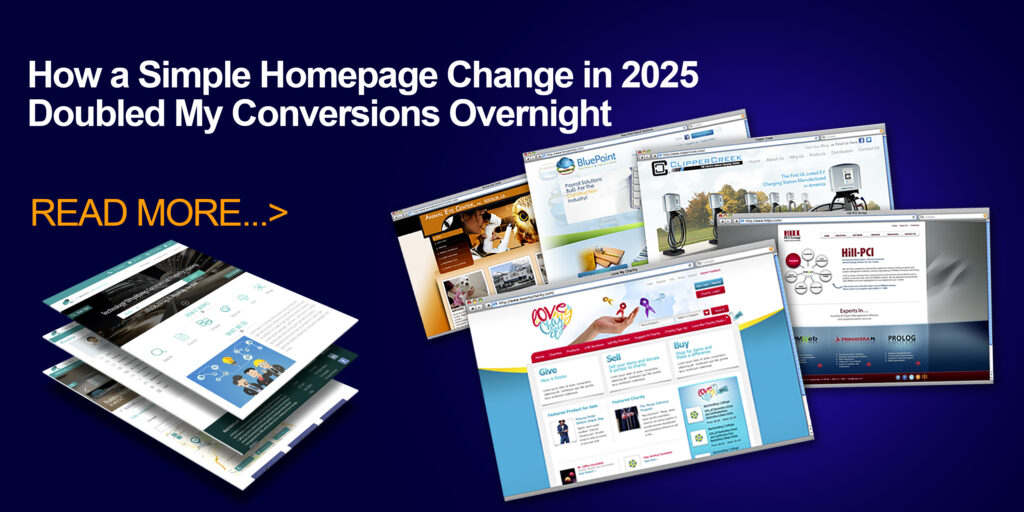7 Must-Have Website Design Features for 2025
Don’t Launch Your 2025 Website Without These 7 Design Features, businesses must understand that a modern website isn’t a luxury—it’s a necessity. A website is your digital storefront, and without the right design features, you risk losing potential customers, decreasing engagement, and falling behind your competitors. To ensure your site performs at its peak and delivers measurable business growth, here are the 7 essential design features every website must have in 2025.
1. Mobile-First & Responsive Design
In 2025, over 75% of web traffic comes from mobile devices. A mobile-first approach ensures your website is designed and optimized for the mobile experience before adapting to larger screens. Every element—buttons, menus, images, text—must load flawlessly across smartphones, tablets, and desktops.
Benefits of mobile-first design:
- Improved Google search rankings
- Enhanced user experience
- Increased engagement and conversions
- Lower bounce rates
Responsive design isn’t just recommended—it’s an SEO requirement. Make sure your breakpoints are tailored, and the media queries are updated for the latest devices.
2. Ultra-Fast Loading Speed
Website loading speed is a major factor in both user satisfaction and search engine ranking. A delay of even 1 second can reduce conversion rates by up to 20%. With Core Web Vitals influencing SEO more than ever, optimizing load time is non-negotiable.
Key tips to increase speed:
- Compress and optimize all images using next-gen formats (WebP, AVIF)
- Leverage lazy loading and content delivery networks (CDNs)
- Minimize HTTP requests, JavaScript, and CSS
Tools like Google PageSpeed Insights, GTmetrix, and Lighthouse should be used regularly to monitor and enhance performance.
3. AI-Driven Personalization
In 2025, AI-driven personalization is essential for creating targeted user experiences. Websites must adapt in real time to deliver content based on user behavior, demographics, time zones, or purchase history.
Examples of AI personalization:
- Showing dynamic product recommendations
- Displaying location-specific offers
- Customizing headlines and CTAs for returning visitors
With the integration of AI tools such as ChatGPT-powered chatbots, predictive search, and smart forms, users feel more understood, resulting in longer visits and higher conversion rates.
4. Dark Mode & Visual Accessibility
Modern users are demanding dark mode compatibility—not just for aesthetic appeal, but also for visual comfort. Websites that support theme toggles between light and dark modes enhance accessibility and user retention.
Equally important is ensuring your site meets WCAG 2.2 accessibility standards:
- Proper color contrast ratios
- Alt text for all images
- Keyboard navigation support
- ARIA roles and proper semantic HTML
Not only does accessibility broaden your audience, but it also protects you from legal issues and improves overall SEO.
5. Voice Search Optimization
With the rise of smart assistants like Siri, Alexa, and Google Assistant, voice search optimization has become crucial. Users are now speaking to search engines in full, conversational queries.
To stay competitive:
- Incorporate long-tail keywords and question-based phrases
- Use structured data (schema markup) to help search engines understand your content
- Focus on featured snippets, as these are often read aloud by voice assistants
Incorporating natural language in your copy will significantly increase your chances of capturing voice search traffic in 2025.
6. Conversion-Focused UI/UX Elements
Aesthetics matter, but your website must also be strategically designed to drive action. In 2025, minimalist layouts combined with interactive CTAs and smart user flows are driving results.
Key UI/UX components to include:
- Clear and compelling call-to-actions
- Sticky navigation and fast-loading menus
- Clean layout with visual hierarchy
- Heatmap-tested content zones for key interactions
Incorporate trust signals like reviews, security badges, and client logos to reduce friction in the buyer’s journey.
7. Advanced Analytics & Tracking Integration
Every high-performing website in 2025 must be backed by real-time analytics and behavioral data. Without proper tracking, you can’t optimize or scale.
Essential integrations include:
- Google Analytics 4 (GA4) with enhanced event tracking
- Google Tag Manager for dynamic control
- Hotjar or Microsoft Clarity for behavior analysis
- Conversion funnels to measure drop-off points
Understanding user behavior and engagement metrics is critical for iterative improvements that increase ROI.
Bonus Feature: Sustainability by Design
Eco-conscious users are growing in 2025. Websites built with sustainable coding practices, optimized hosting, and low-impact assets are attracting both users and positive media attention.
Use green hosting providers, minimize server load, and avoid unnecessary scripts or auto-play videos. Google is increasingly favoring energy-efficient websites as part of its push toward a sustainable web.
Don’t Launch Your 2025 Website Without These 7 Design
In a fast-evolving digital landscape, launching a website without these 7 essential design features in 2025 is like setting up a shop without a door. Modern users expect speed, personalization, accessibility, and intelligence—and search engines demand it.
Implementing these strategies not only boosts user satisfaction but also enhances your site’s visibility, authority, and profitability in search rankings.
If you want to read more information about how to boost traffic on your Website just visit → The Insider’s Views



